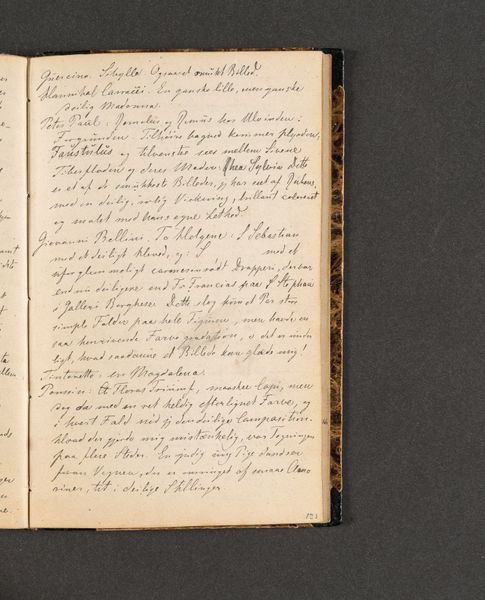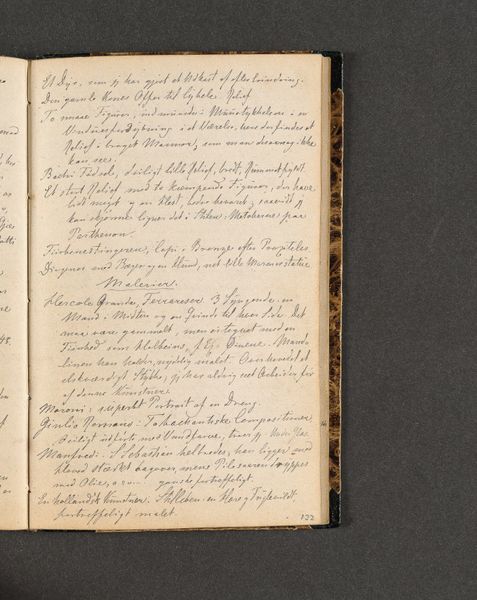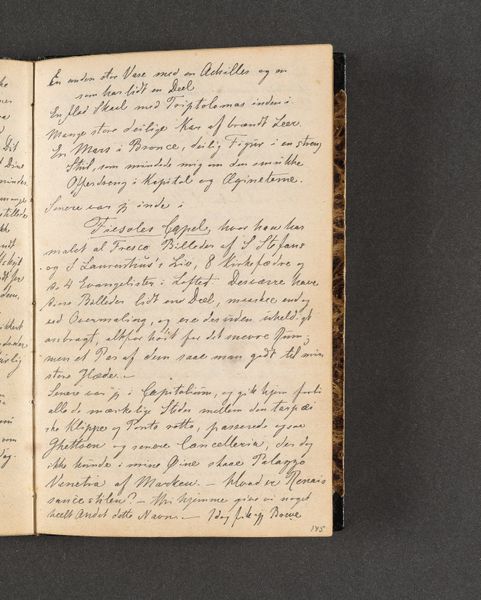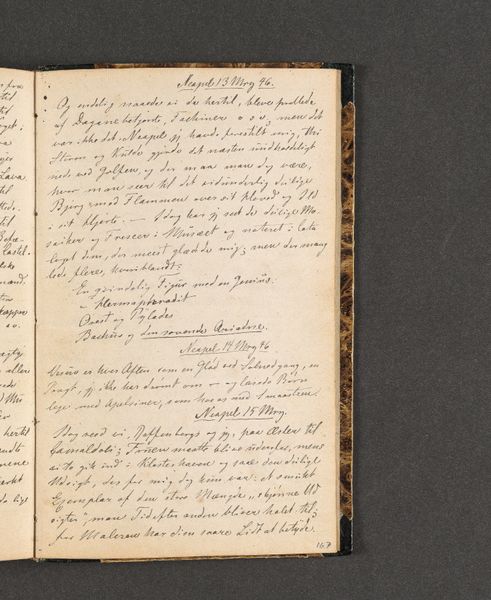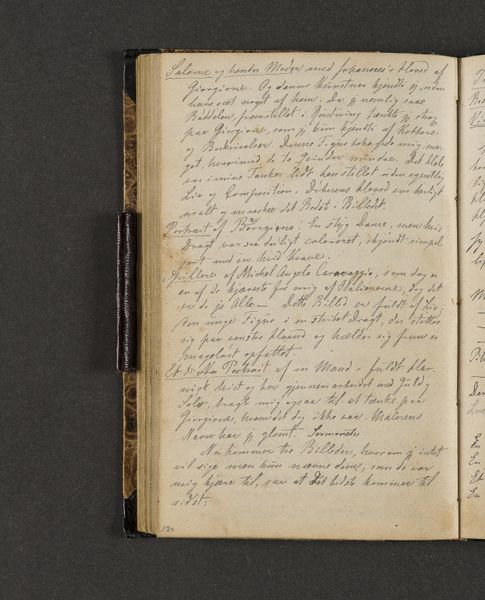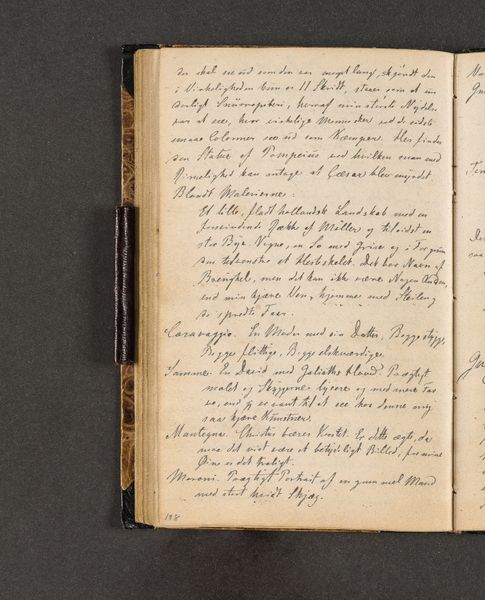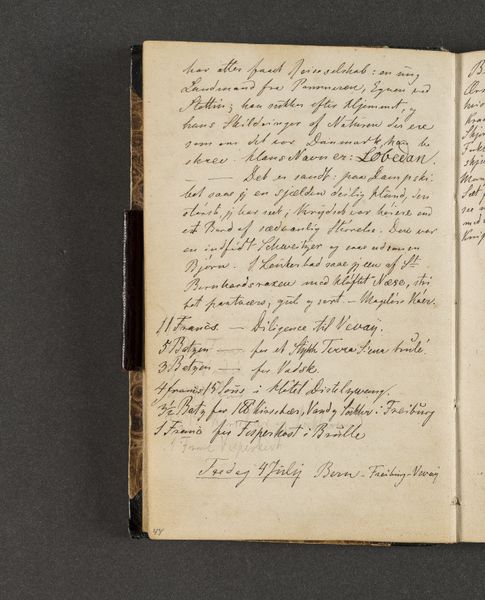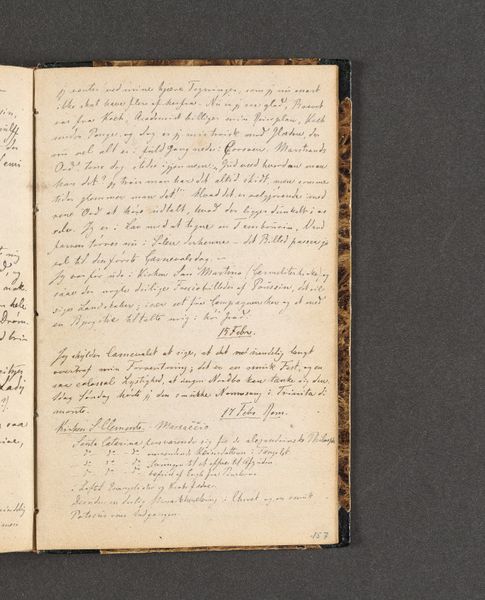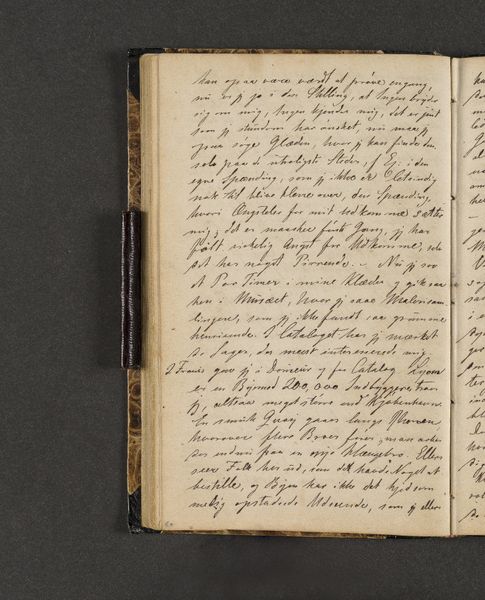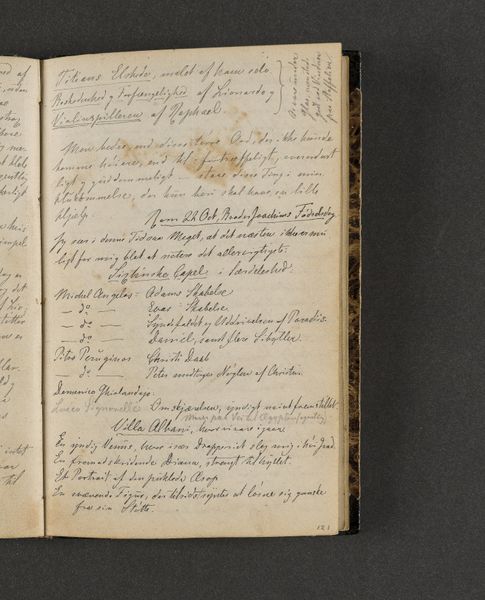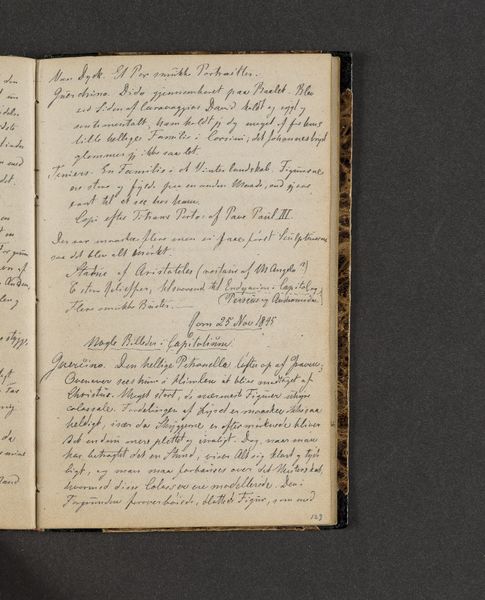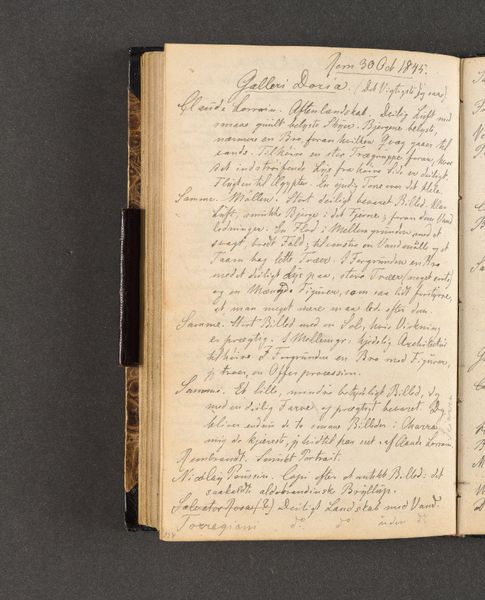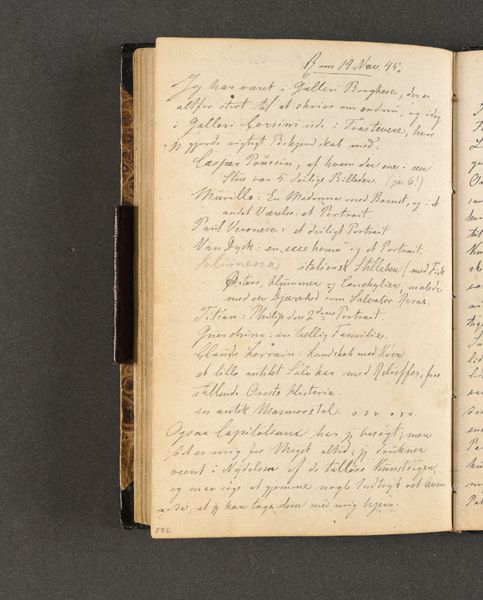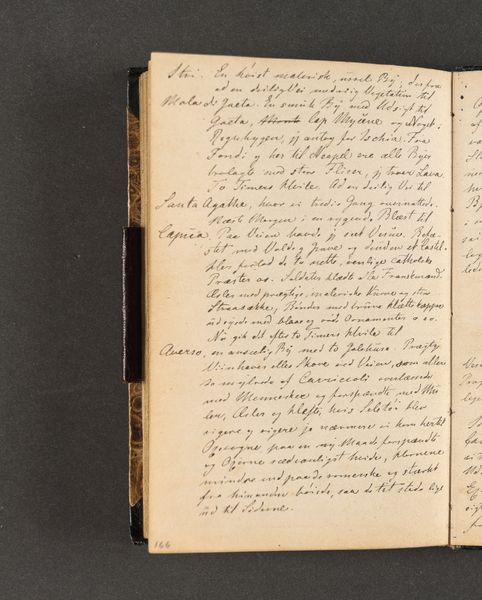
drawing, paper, pen
#
drawing
#
narrative-art
#
paper
#
romanticism
#
pen
Dimensions: 161 mm (height) x 103 mm (width) x 11 mm (depth) (monteringsmaal)
Curator: This… this isn’t your typical museum piece, is it? Johan Thomas Lundbye’s "Rejsedagbog" from 1845. It's essentially a travel journal. What strikes you most about encountering something like this? Editor: Well, first off, it's the intimacy. Seeing someone’s personal notebook—with pen and ink on paper, no less—feels very private, almost voyeuristic. But also… the handwriting is a bit hard to decipher! I’m curious what sort of “narrative art” is contained in these pages. What stories do you think it tells? Curator: The “story” here isn’t just in the words themselves, though those are crucial. Think about travel in 1845. Lundbye, a Danish Golden Age painter, wasn't just casually sightseeing. Journeys like this were acts of intellectual and artistic exploration, shaping his understanding of the world and informing his art. Editor: So it's a document of self-discovery as much as a record of places? Curator: Precisely! Consider the power dynamics at play. Lundbye, as a Western European artist, is recording his impressions, filtering the world through his own lens, a lens shaped by the privileges of his time and background. His observations, while personal, contribute to a larger history of representation and the construction of cultural narratives. How might his background have influenced what he chose to see and record? Editor: That’s a good point. We tend to assume these journals are objective, but they're totally subjective and shaped by the author's experiences. Curator: Exactly. We should consider how his journal contributed to – or perhaps even challenged – the dominant narratives of his time. It encourages a critical dialogue between art history and the social context. Editor: This makes me think differently about personal records like journals, seeing them as cultural objects rather than just private thoughts. Curator: And that’s the beauty of engaging with pieces like this. It invites us to reflect on the past and its relevance to our present.
Comments
No comments
Be the first to comment and join the conversation on the ultimate creative platform.
